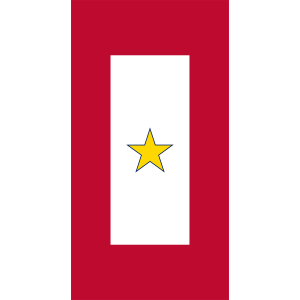Developing a Care Team can be a daunting task.
There is a reason why the Army doesn’t give us details, SOP’s, and a cookie cutter approach to building a CareTeam. Every battalion, squadron, brigade, and troop has a different personality. Made up of mostly volunteers, CareTeams will look very different from one another and function differently based on the needs and outline defined by Command. The Army has given us a skeleton, if you will, to help guide our efforts. Both the CareTeam Handbook and the Trauma in the Unit Handbook give us basics as to what a CareTeam is and what it is not. It also provides important information on how to handle media, mass casualties, and other important topics.
The Basics of Care Team Development
First we must begin with the skeleton of what the Army has outlined Care Teams to be. Here, you will find the handbooks and crucial advice from the best.
What is a Careteam?
Those who have grown up in a church or close community may liken it to the close group of people that follow up and serve a hurting family. These communities often surround a grieving family with food, cards, and anything that family may need. Different cultures respond to crisis in different ways. In the military, a culture where crisis is saturated with procedures and standards, the volunteer group of often spouses lead the way in serving the emotional needs of the now Gold Star Family.
Care Team Members
A group of spouses who serve a spouse temporarily until family or other support are able to arrive and help the grieving family. Members can be as close as they feel comfortable serving in the home cleaning, cooking, answering phones, etc or serve from a distance by cooking meals and/or helping with the care of Care team member’s children.
Rear Detachment
Led out by the Rear Detachment Commander who is playing out the standard operating procedures (SOP) left behind by the Commander. Because no two situations are alike, he is often left to fill in the gaps of the SOP as best as he can, based on the needs of the family. All decisions, including everything in between deploying the Go-team to terminating the Care Team fall on the Rear D Commander.
Army Community Services (ACS) Training
When building a CareTeam, Army Community Services (ACS) does a fine job training volunteers in their basic training course. During this training, volunteers will be taught the five stages of grief, the details of the notification procedure for seriously injured soldiers as well as those killed in action. There are other topics covered such as how Rear Detachment will read and interpret a DD93 form (a form filled out by the soldier prior to deployment describing whom should be notified and receive benefits). Once you have received the basics of what it looks like to work within a Care team, each unit, battalion, or brigade must still go through the daunting task of making a team and a set of standard operating procedures (SOP) that works best for them.
Go-Team
A small group of no more than 3 volunteers, usually senior spouses and the Care team Coordinator. This team is sent by the Rear D Commander to follow up after the initial notification based on the new widow’s willingness. The Go-team offers emotional support to the spouse until additional support can arrive and explains the availability and benefit to having a Care team serve her.
Care Team Handbook
The Army provides an outstanding Care team handbook that has a few of my favorite things inside. It covers most of which is taught in the ACS training, but it has plenty of useful forms, note pages, and my favorite is a page that explains what a Care team is and is not. This has been especially helpful to print copies of and put in a folder especially for a new widow. It sets the expectations for all involved and is a great tool for her to look back on later. Of course a unit can use most of this information as a cookie cutter approach, however, playing out scenarios will often reveal it is not enough.
Trauma in the Unit
Trauma in the unit is a much more extensive handbook that gets into some of the bigger issues a team may face. Here it covers mass casualty situations, dealing with the media, and how to work with the rest of the FRG and Rear Detachment.
Care Team
Beyond the Basics
ACS does an amazing job introducing the basics, but it is often left to the command and the volunteers to develop SOP’s and the organization of the Care team for their group. Beyond the Basics offers you templates and ideas to consider during your development.
Every unit has their own personality when it comes to how the CareTeam functions. As a volunteer team of spouses paired with Rear Detachment, it has to take on the vision of the Commander. The Commander’s vision should set the tone and pace for how the CareTeam functions, when it is deployed as well as determining how temporary it will be utilized. Commanders also have a vision for whether or not there is a Go Team and who should be on that Go Team. The materials provided here are to be used as discussion starters as you move though the process of development. Based on our experience, it includes many key components that take into account feelings and grief responses that a new widow might have, as well as the importance of protecting your CareTeam members. By protecting, I of course mean helping the Go Team/CareTeam members care for themselves, pace themselves in their service, and leave room for attending to any vicarious anxiety or trauma that they may experience.

Take and leave what you want from the resources in developing your own. Don’t forget to include your insignia and Unit name at the top. Because serving on the CareTeam can seem intimidating at first, I recommend volunteers consider serving as an “Emergency Volunteer” that would serve families and spouses during a crisis (i.e. car breaks down, new baby). This would give them an opportunity to see how a team would be deployed and be utilized similarly to the CareTeam.
Special thank you to Captain Corey Steiner (amazing leader and Rear Detachment Commander) and Susan Brown (Go Team Leader extraordinaire and wife to Col Robert Brown) for helping develop these original documents, SOP’s, and materials that have helped so many others. It was in hindsight after KOP Keating’s loss of eight amazing men that much of our organization changed and developed with so many variables in mind.
(Includes: Application letters, job descriptions, SOP’s, and more…)
The First Day of Grief:
What do you say when you don’t know what to say? Helpful tips on how to serve someone dealing with intense loss. If you struggle with words to say to someone who is grieving, you are not the only one. Most people feel the pressure to say something when the only thing that person wants is their loved one back. So, we stumble through our words to find something, anything, that can bring comfort. This is one of those situations where if you haven’t decided what you believe about death, or are not comfortable with silence, then you need to be prepared ahead of time.
Many families, and I agree, tell me there are NO words that bring them the comfort they want. Your presence when they feel most alone is what brings them comfort. That doesn’t mean that we have to sit in silence the whole time, though. It means that if we are thoughtful with our words, we can bring comfort and safety to those painful moments. Here are a few tips for you to consider…
Here are a few tips for you to consider...
- Ask the grieving person if they want you there or if they want to be alone, and listen. If they ask to be alone, leave your number and ask when it would be okay to call to check on them and go. Then follow through with that phone call!
- Never move anything around in the house unless you are asked. Even in the beginning stages of grieve, attachment to material things is strong. Never assume something is trash unless they tell you. I had one wife tell me she left a soda can and a granola bar wrapper by her bed for a long time because it was the last thing he ate.
- Use the deceased person's name. Do not be afraid to say his/her name frequently. Saying "him" over and over distances him more. Using their name can actually aid in the grieving process as they hear their name and feel both comforted, feel their presence in their name, and begin to feel the reality of the moment.
- Do not be afraid to cry. Some of you have an amazing talent for empathy and tear up at a person's pain. This can make a person feel heard and understood and safe to cry as well. Of course we are not talking about full out weeping. If you are crying harder than the other person then you are drawing attention to yourself and it becomes about you. Withdraw yourself and ask if you are the right person to bring comfort. If you are not a crier- don't feel bad, tears don't measure thoughtfulness.
- Do not give advice on anything, unless you are a schooled expert in that area. This includes financial decisions, military protocol, family strife, etc. Refer to someone who can help in a non-biased way. NOTE: This one will suck you in! Sometimes in our attempts to comfort, our own desire to feel needed creeps up and we want to offer advice disguised as comfort. Resist the temptation to get involved and ask another person if it is wise if you have been asked.
- Follow the grieving person's lead on discussing "where the deceased is now". Your beliefs may differ from theirs. Refer to the above tip! If you don't know what to say, don't say anything at all. Comments on this subject have been the most hurtful because of idiotic statements.
- Consider cultural differences. Some cultures, such as the Jewish culture, have a specific mourning process that often involves only family members. Do not be offended if others are not invited in. Simply send or leave a card at the door and offer to call at a time that is best for the family. Do you research! Respecting their beliefs and being knowledgeable speaks volumes in your care for them.
- There are several stages of grief (sadness, anger, denial, acceptance, and bargaining- although they are re-thinking these in the psychological community). Know what they are and look for them so you can recognize them. It is likely not helpful to point them out. It is more important that you know how you will react to them. Occasionally, anger can be directed at those around them. It is important to 1) Not take it personally and see it as an expression of grief, and 2) Know that it is ALWAYS right to hold your boundaries in explaining to a person how to treat you.
- It is important to take care of yourself. Do not over-extend yourself to the point you need someone to care fro you. Ask others to step in (ask the family's permission first) to help.
- If the death was sudden, then learning of it was traumatic for the family, further complicating the grief. Have resources available for grief counseling or professionals who can help.
The Stages of Grief
Henry Cloud, a wonderful well known speaker and writer known for his work on boundaries, answers the question “Will I ever be done with the stages of grief?”
